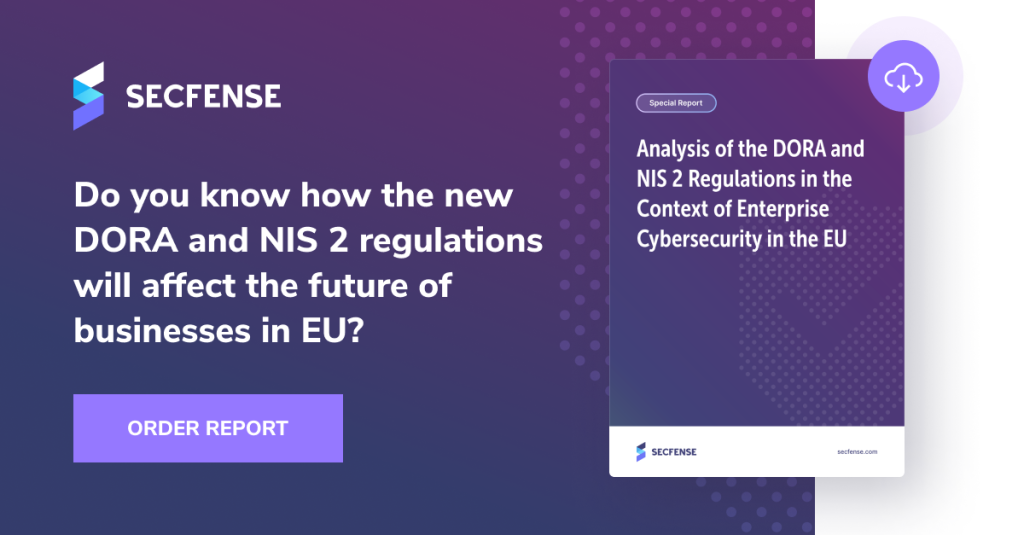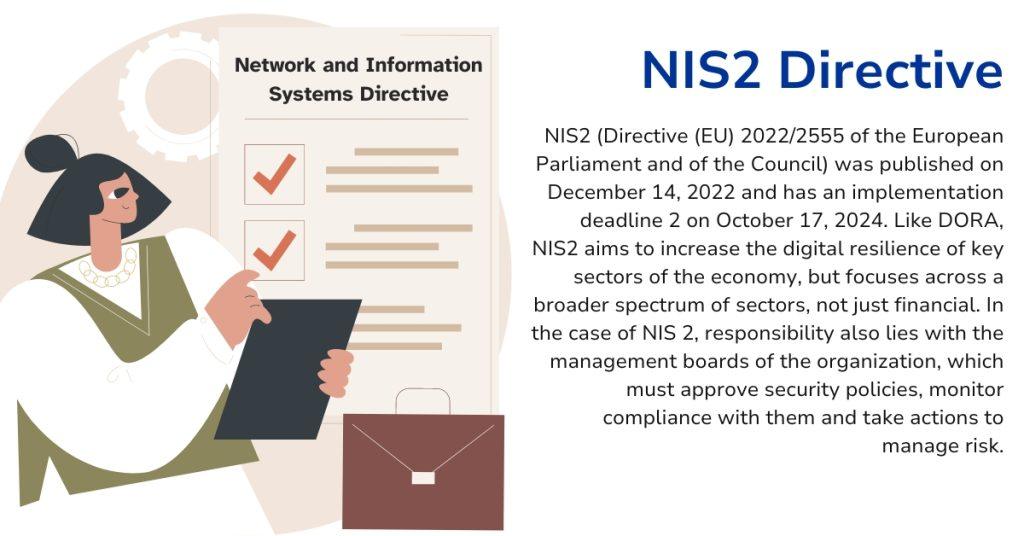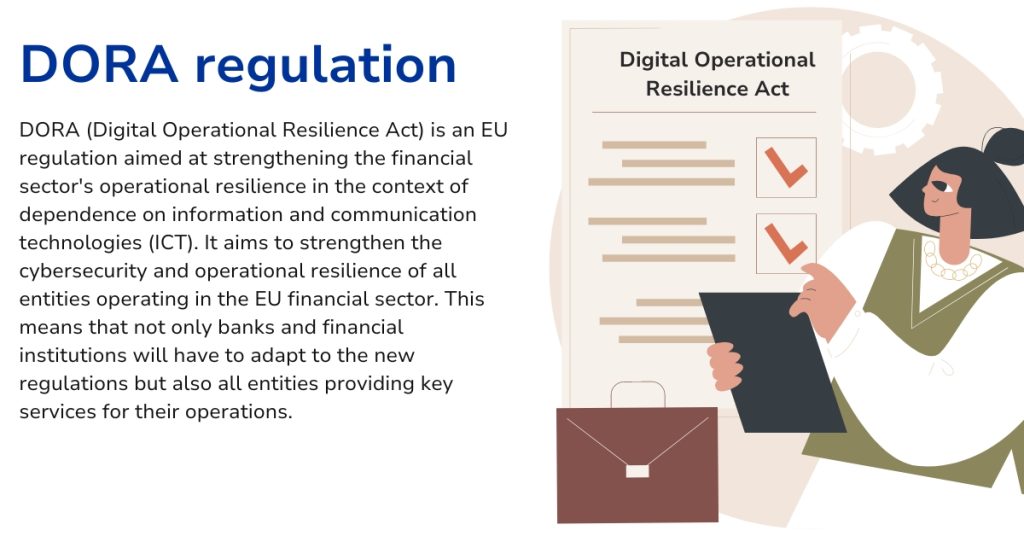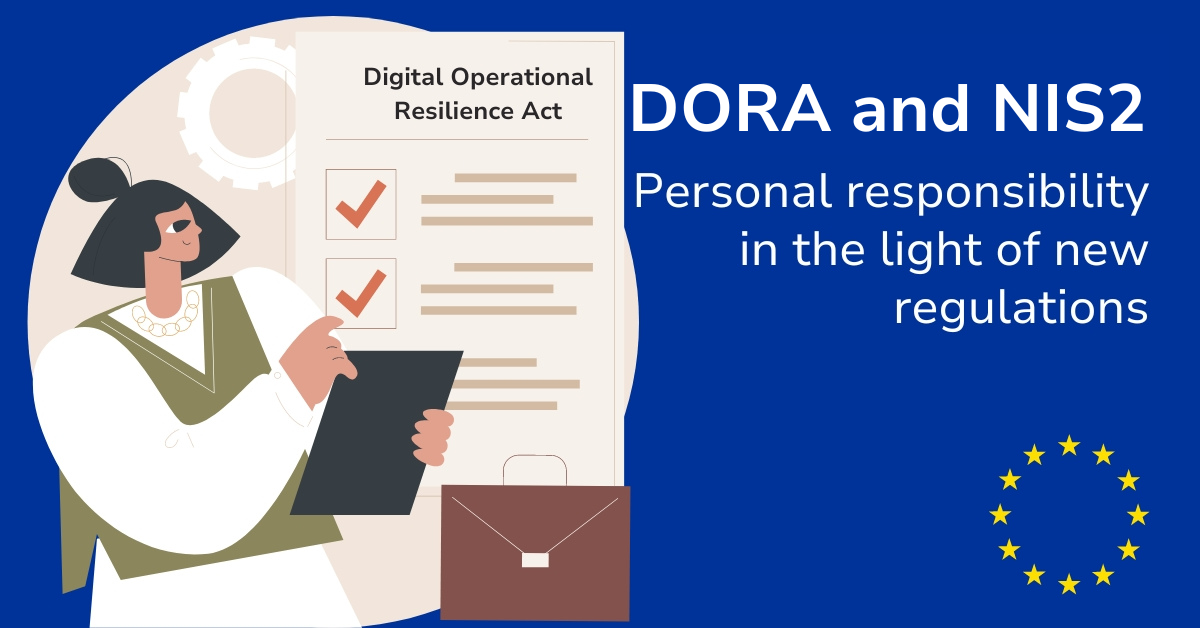The Digital Operational Resilience Act (DORA) and the Network and Information Systems Directive (NIS2) are reshaping how organizations in Europe and beyond manage cybersecurity and operational resilience.
While these regulations demand stronger technical safeguards like Multi-Factor Authentication (MFA) and Zero Trust, they also make one point crystal clear: responsibility for compliance sits at the top with your board of directors and senior leadership.

What Is DORA and Who Must Comply?
DORA is an EU regulation that strengthens the operational resilience of financial sector entities, including banks, insurers, investment firms, and payment institutions as well as their ICT third-party providers such as:
- Cloud service providers
- Software vendors
- Cybersecurity service companies
Key point: Responsibility for compliance rests with the organization’s governing body. Board members must:
- Approve security and operational resilience policies
- Allocate sufficient resources for implementation
- Oversee and verify compliance on an ongoing basis
Timeline:
- Published: December 14, 2022
- In force: January 16, 2023
- Applicable: January 17, 2025

What Is NIS2 and Who Must Comply?
NIS2 has a broader scope, applying to critical and important entities across sectors like:
- Energy
- Healthcare
- Transport
- Financial market infrastructure
- Public administration
Under NIS2, boards must:
- Approve cybersecurity strategies and risk management measures
- Monitor and assess compliance
- Implement governance that supports Zero Trust principles
Timeline:
- Published: December 14, 2022
- Implementation deadline: October 17, 2024

Consequences of Non-Compliance
NIS2
- Key entities: Up to €10M or 2% of global annual turnover
- Important entities: Up to €7M or 1.4% of global annual turnover
- Additional penalties: Temporary suspension of certification, management bans, and reputational damage
- Personal liability for individual board members in certain cases
DORA
- Administrative sanctions from national regulators
- Binding orders to stop non-compliant practices
- Financial penalties and public notices naming the violator
- Potential operational restrictions or termination of services
- Personal liability for governing body members under national law
Personal Liability Under DORA and NIS2
Both frameworks make it explicit: liability is personal.
Boards cannot delegate full responsibility to the IT department or compliance team. Members of the governing body may be held accountable for failures to implement and oversee required measures.
This means:
- Awareness is mandatory board members must understand regulatory obligations.
- Oversight is active ongoing monitoring, not one-off approvals.
- Decisions must be documented to demonstrate due diligence.
Why Strong Authentication Is Key to Compliance
Both DORA and NIS2 emphasize strong authentication as part of secure identity and access management:
- Reduces phishing and credential theft risks
- Supports zero-trust security by verifying every access request
- Meets regulatory expectations for proportional, risk-based security controls
How Secfense Helps Boards Meet Compliance Obligations
Secfense solutions align with DORA and NIS2 requirements by delivering phishing-resistant MFA and passwordless authentication across the enterprise without costly application rewrites.
Relevant solutions:
- Phishing-Resistant MFA – Eliminate passwords as an attack vector
- Passwordless for Workforce (IAM) – Secure internal access with passkeys
- Passwordless for Customers (CIAM) – Provide secure, frictionless client logins
- Legacy App Protection – Add MFA and policies to apps without code changes
- Privileged Access & Microauthorizations – Authenticate high-risk actions individually
- Secure Remote Access (VPN, Citrix, OWA) – Enforce Zero Trust for external systems
- Regulatory Compliance Alignment – Out-of-the-box support for DORA, NIS2, PSD2
📩 Contact Us to Discuss Your Compliance Strategy
What to Expect
- A short conversation to understand your requirements and security goals
- Discussion of commercial terms for relevant Secfense solutions such as Passwordless IAM, CIAM, Legacy App Protection, or Privileged Access controls
- Agreement on next steps proof of concept, contract details, or rollout plan
Who It’s For
- Prospects ready to scope a project and discuss budgets
- Existing customers expanding Secfense coverage to more systems
- Organizations in the decision/purchase stage after reviewing our solution areas
